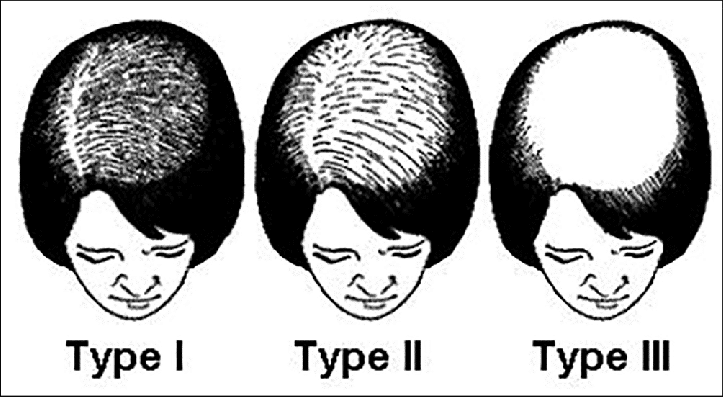Female Hair Loss
Hair Loss in Women
Just as in men, hair loss affects many women, and similar to men, the most common cause of female pattern hair loss is androgens. Any female can experience hair loss, but it is more common in women older than 40, just after having a baby, in certain hairstyles such as braids or tight ponytails, and menopausal women.
Women, compared to men, are more likely to have other causes of hair loss than genetic hair loss making the diagnosis of the cause of hair loss in women more complex. These causes include thyroid dysfunction, deficiency of vitamins and minerals (especially iron), dieting that causes rapid weight loss, and significant hormonal shifts in pregnancy and menopause. Women also tend to start experiencing hair loss later in life than men.
Female pattern hair loss starts in the crown and occurs at a slower pace compared to men. The beginning stages of female pattern hair loss tend to be more subtle, with the first sign being widening the hair part. Also, in contrast to male pattern hair loss, which typically starts at the hairline and progressively marches backward, female pattern hair loss tends to be more diffuse while maintaining the hairline. Due to the difference in the appearance of female pattern hair loss, another grading scale is used. The Ludwig grading scale is the most widely accepted classification to grade the extent of female hair loss ranging from Ludwig grade I being early hair loss to the most advanced Ludwig grade III.

Like men, the incidence of hair loss in women increases with age. However, since a large percentage of hair loss in women has a secondary cause other than androgenic alopecia, women need to undergo testing much more often than men to rule out other secondary causes such as thyroid dysfunction, deficiency of vitamins and minerals, especially zinc and iron deficiency, and estrogen deficiency. Women are also more susceptible to immune-mediated hair loss compared to men. Women are more vulnerable to traction alopecia than men due to hair styling. Traction alopecia occurs from prolonged excessive tension on hair follicles, causing permanent damage, such as in women wearing tight ponytails or their hair in tight braids. Over processing of the hair using chemical treatments such as hair coloring and perms and the excessive use of heating implements can cause the appearance of hair loss through damage to the hair shafts and breakage of the hair. Because of all these factors diagnosing the cause of hair loss in women tends to be more complex. Additionally, the diffuse nature of female hair loss often makes them poor candidates for surgical treatment of hair loss.
An estimated 2 to 5% of women are candidates for surgical hair restoration due to the donor region’s frequent involvement, resulting in an insufficient number of stable follicles for successful results. Women who are good candidates for surgical hair restoration include:
- Women with distinct patterned hair loss, including hairline recession and thinning of the vertex
- Women who have hair loss secondary to traction alopecia
- Women with congenitally high hairlines
- Women have a donor area unaffected by the hair loss
- Hair loss from trauma
Contact the experts at Powell Medical if you’re interested in this procedure or are wondering if you are a good candidate for a female hair transplant surgery. Let us help you feel like the confident and beautiful you again.













